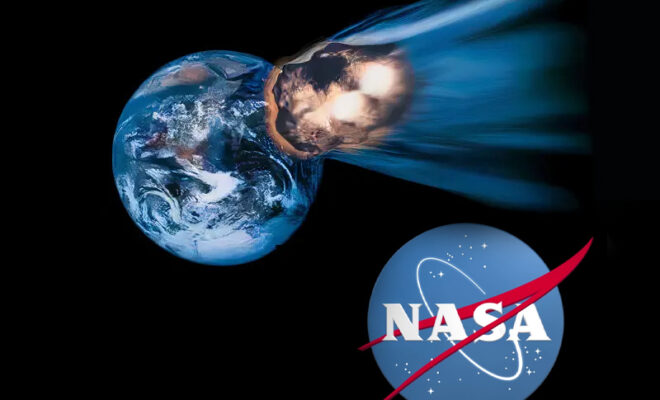An Asteroid Rushing Towards Earth, At A Speed of Hypersonic Missile

An asteroid flying towards Earth which is heading faster than a hypersonic missile. Will it hit the earth? Should you worry about this giant space object?
The Planetary Defense Coordination Office of NASA has red-flagged asteroid 2021 AE because of its exceptionally close approach to the planet. The asteroid will be 6.3 million kilometers from Earth today, December 28, when it makes its closest approach.
NASA also estimates that the asteroid will pass the earth at a shortest distance of 5193 kilometers! Already approaching the earth, the space asteroid is traveling at a speed of about 53830 kilometers per hour.
According to the-sky.org, asteroid 2021 AE is a member of the Apollo group of asteroids. On January 2, 2021, it was discovered.
This asteroid orbits the Sun every 728 days, traveling up to 369 million kilometers away from it and as near as 105 million kilometers.
Keep Reading
Asteroids are relics of the early stages of our solar system’s formation, some 4.6 billion years ago. The main asteroid belt, which spans between Mars and Jupiter, is where you can find most of these celestial pebbles.
The asteroid may be thrown out of its orbit and sent hurtling in all directions by contact with the gravitational field of a planet, especially Jupiter.
These Near Earth Objects (NEOs) are monitored by NASA’s Planetary Defense Coordination Office for possible collisions with Earth and are classified as Potentially Hazardous Objects if they pass within 8 million kilometers of the planet.
Asteroids have been avoiding Earth in recent weeks, but a crash with the planet is still a possibility. Actually, some 6.5 crore years ago, an asteroid wiped out one of the planet’s biggest species, the dinosaurs.
According to the Alvarez hypothesis, the extinction occurred as a result of a huge asteroid striking Earth more than 6.5 crore years ago.
The asteroid that terraformed the earth is most likely to be responsible for the extinction of the dinosaurs. Near the Yucatan Peninsula near Chicxulub, Mexico, scientists have even found the impact crater of the asteroid.



